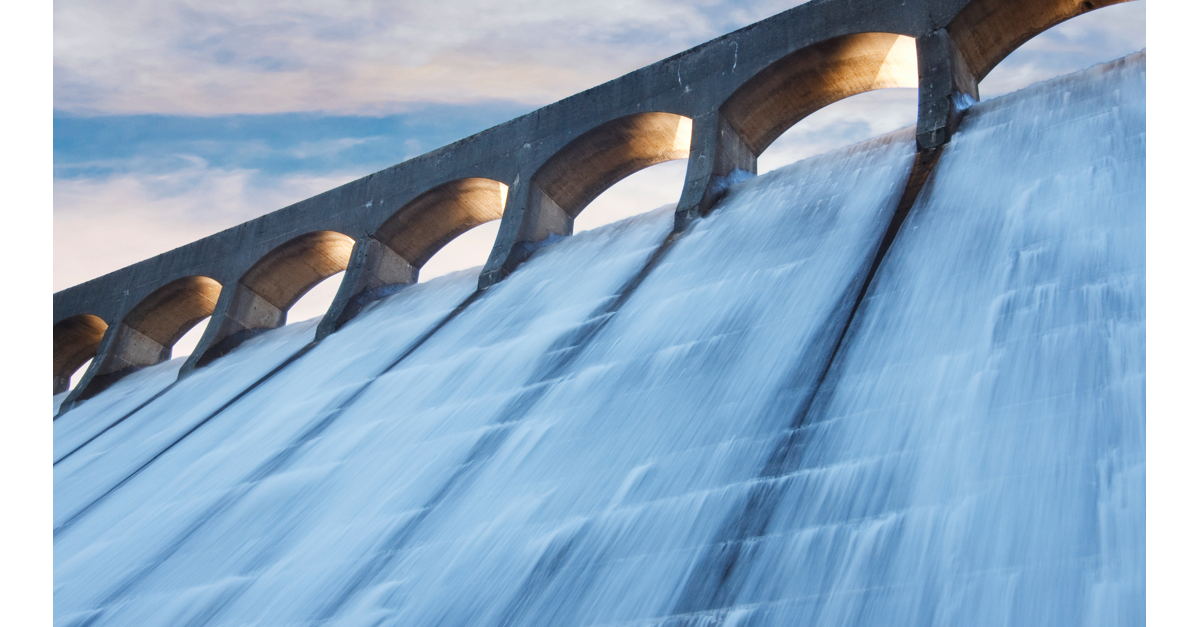Week in water: updates from across the water community

This week in water, a powerful east coast low lashes New South Wales, causing flash flooding, widespread power outages and accelerating coastal erosion.
Across Australia, the latest PFAS report highlights progress and complexity in tackling one of the most persistent water contaminants, while utilities are leading on climate action, customer engagement and community investment.
Internationally, a high school innovation could help remove microplastics from drinking water using ultrasonic waves, and researchers take a major step toward sustainable hydrogen by enabling electrolysis with non-purified water.
Want in-depth articles on water trends delivered to your inbox? Sign up for the Australian Water Association’s weekly newsletter, Water Source.
National
Storm lashes NSW with flooding, wind and coastal damage
A deep and slow-moving east coast low has battered New South Wales, bringing torrential rain, destructive winds and heavy surf to coastal communities from Sydney to the mid-north coast.
Some regions recorded over 200 mm of rain in less than 48 hours, with wind gusts topping 100 km/h uprooting trees and damaging critical infrastructure. The State Emergency Service responded to hundreds of calls as flash floods inundated homes and roads.
New PFAS report highlights breakthroughs and gaps
Water Research Australia’s updated State-of-Knowledge report offers one of the most comprehensive overviews to date of PFAS detection, treatment and behaviour in water systems.
Version 2.0 of the report, released in late June, explores how treatment plants – despite not being original sources – can act as redistribution points, cycling PFAS through wastewater, recycled water and biosolids.
The report evaluates leading-edge technologies including pyrolysis, cavitation, gasification and bubble capture. While these show promise, the report stresses the importance of site-specific evaluation to ensure effectiveness and environmental safety.
CSIRO guide targets AI project success
In response to growing pressure on organisations to integrate artificial intelligence, CSIRO has published a new planning guide designed to help decision-makers select and prioritise AI projects that deliver long-term value.
The guide, Evaluating and prioritising artificial intelligence projects, offers a framework to assess potential projects based on alignment with strategic goals, data availability, risk factors and ethical considerations.
Lead author Dr Stefan Hajkowicz said up to 80% of global AI projects currently fail to deliver results. “This guide helps organisations evaluate options with a clearer view of the risks, strategic alignment, data requirements and implementation challenges,” he said.
States and territories
Gippsland Water invites customer input on updated charters
Gippsland Water is refreshing its Customer Charter and Trade Waste Customer Charter and is seeking feedback from customers to ensure the updates reflect community needs.
The new versions have been redesigned for clarity and ease of use, including more visible pathways to financial support and family violence services.
Managing Director Sarah Cumming said community input would shape the final documents. “The changes we’re proposing will further ensure our customers’ rights and obligations are clear, as well as our own,” she said.
Yarra Valley Water reaches net zero milestone
From 1 July 2025, Yarra Valley Water will operate entirely on renewable electricity and has confirmed it will report net zero Scope 1 and 2 emissions for the current financial year.
This achievement marks four years ahead of the timeline set by the Victorian Government for water corporations. It follows sustained efforts including solar energy infrastructure, waste-to-energy conversion at Wollert, and investment in certified carbon offsets.
Managing Director Natalie Foeng described the shift as a “major step forward” in the utility’s net zero journey. “We set ourselves ambitious targets, and I’m proud to say 30 June 2025 was the last time we’ll report operational emissions that exceed net zero,” she said.
Greater Western Water launches record grants round
Greater Western Water’s Thriving Communities Grants and Sponsorship program will inject around $180,000 into 28 grassroots projects across its service region, the largest funding round in the program’s history.
The grants support a wide range of initiatives focused on liveability, education, sustainability and wellbeing. Community groups could apply for up to $20,000 in grants or up to $5,000 in sponsorship, with the program now in its fourth year.
GWW General Manager of Strategy and Partnerships Kessia Thomson said: “We’re supporting more projects than ever before, and we can’t wait to see them come to life over the next 12 months”.
International
Teen scientists win global prize for microplastics removal device
A pair of 17-year-old students from Texas have won top honours at the Regeneron International Science and Engineering Fair for their ultrasonic device that removes microplastics from water.
Victoria Ou and Justin Huang’s invention uses high-frequency sound waves to filter microscopic plastic particles.
The device could offer a practical solution to a growing global challenge, with some studies suggesting that individuals may ingest or inhale a credit card’s worth of microplastic each week.
Electrolyser breakthrough allows hydrogen from impure water
Researchers at Tianjin University have developed a new catalyst strategy that allows proton exchange membrane (PEM) electrolysers to produce hydrogen from impure water, something previously only feasible with highly purified sources.
By creating an acidic microenvironment at the catalyst site, the system resists contamination and degradation, unlocking new potential for large-scale hydrogen production using more readily available water sources.
This development could help reduce costs and increase the feasibility of clean hydrogen fuel across industries, including transport and emergency backup power.
Want in-depth articles on water trends delivered to your inbox? Sign up for Water Source, the Australian Water Association’s weekly newsletter.

